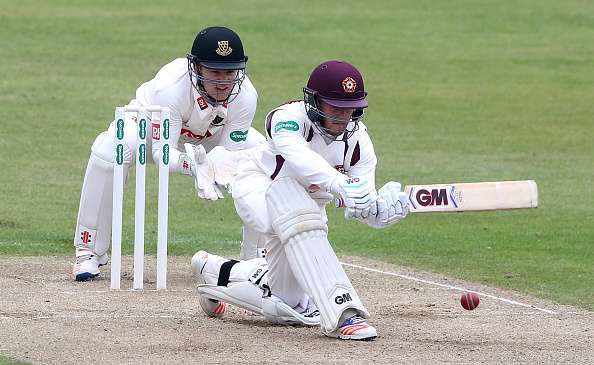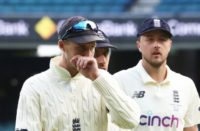Is the selection of England’s international teams an art or a science? The fudged answer, with that old image of selectors poring over averages and port before declaring their hand, is that it is probably a combination of the two. And yet my own instinct is that it should be an art which casts off the crutch of science and statistics to promote that skill which all selectors should possess but few appear to use – judgment.
It is well known that the current panel of selectors under James Whitaker rarely consider batsmen who make red ball runs in the second division, as they consider the bowlers there to not be as challenging as in the top division. Perfectly logical you might think except that Test cricket is undergoing something of an existential crisis and needs players with the ‘Wow’ factor if it is to remain prominent in the public consciousness – and they can come from just about anywhere.
Spotting such players requires judgment beyond a blanket call that first division runs count and second division runs do not. Their statistics do not always stand out though their ability, providing you know what to look for, generally does. Ben Duckett, for example, has 1,400 first-class runs in the second division, an eye-catching amount that even the current selectors would struggle to miss. But if any of them had watched closely over the past season or so, they would already know of Duckett’s exceptional, almost freakish, eye-hand co-ordination which propels him into the realms of a special talent. In most sporting cultures anyone possessing such gifts would be fast-tracked to the top, though not, it seems, in English cricket.
Others have suffered from second division anonymity. Tom Westley has made almost as many runs as Duckett for an Essex team which has just won the Second Division Championship and does not appear to have sniffed the chance of a call-up despite the batting woes of England’s top order. Neither has Sam Northeast, who has enjoyed a fine season for Kent, Essex’s closest rivals for the title.
Unless Duckett or Westley is picked by England this weekend, they may feel the need to join a first division county to get noticed. Yet while that logic might appear sound, on current trends, the idealogy underpinning it is not.
Sceptical? Well, let’s take some of the batsmen who’ve played for England recently. Adam Lyth, Gary Ballance, Alex Hales and James Vince all came from counties in the first division. All have subsequently been found wanting in Test cricket. Which suggests the top division is not quite the finishing school it is made out to be and why, as a result, the selectors should not pander to its produce.
In any case, Alastair Cook and Moeen Ali both came into the England side from second division teams, albeit under a different set of selectors. Both possess the X-factor, Cook for his sheer cussedness, concentration and endurability, Moeen for his exquisite shot-making.
The best talents have always been spotted early and thrown in at the deep end to learn on the job in international cricket. Ian Botham and David Gower were not fully formed Test match players when they were first picked for England. Nor was Joe Root. Yet all three are among the best this country has produced. Not everyone thus identified will be a success, but a 70 per cent success ratio would be acceptable.
The ECB will argue they have the Lions and England Performance Programme to act as a link in the pathway for players from county to greatness. But while that may work for some, it is another checkpoint that players with the Wow factor could do without.
One thing crucial about the ‘talent will without’ theory, is that those picked for international duty need to have a love of the big occasion and need to have the temperament to cope with it.
No amount of time in the first division or Lions teams will tick those boxes. The only time you find that out is when they are confronted by it. On that basis Vince, fine talent that he appears to be for Hampshire, does not appear to possess it, looking anxious every time he walked to the crease for England.
Another reason judgment should be employed, rather than statistics, is to rule out the player who looks good when surrounded by certain team mates and not others.
It happens less in cricket, as team efforts are comprised of individual performances, but it can happen. For instance, what of the off-spin bowler who plays county cricket with a left-arm seamer who creates some favourable rough for him to bowl into? He gets picked for England on the wickets he takes for his county but all the seamers are right-arm and there is no rough and therefore less effective.
However the current selectors have been doing their job it has clearly not been impressing their boss, Andrew Strauss. One of the things Strauss has introduced in his role as ECB’s director of England cricket is a North v South white ball game based on the Most Valuable Players ratings as measured by computer. The hope is to pick up the odd hidden gem lurking in county cricket but which has been overlooked by the selectors be it through some of the prejudices listed above or simply because they have not had time to see them play often enough.
An algorithm like that is probably no better at spotting the Wow factor than a reactionary stuck in the 1950s, but it has thrown up the odd interesting possibility such as Graeme White from Northamptonshire.
White left Northants to join Nottinghamshire in 2010, in a bid for more cricket, but didn’t really break into the side. He then rejoined his old county where his left-arm spin has been regular source of wickets to the point where the North v South game, somewhat crazily scheduled to be played in the UAE, looks nailed on for him.
If that match does prove successful in unearthing a few diamonds, the days of selectors could be numbered though not, you suspect, if they were to trust their judgment more and have the courage to put it on the line.
This piece originally featured in The Cricket Paper, September 9 2016
Subscribe to the digital edition of The Cricket Paper here












